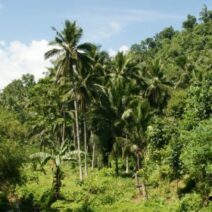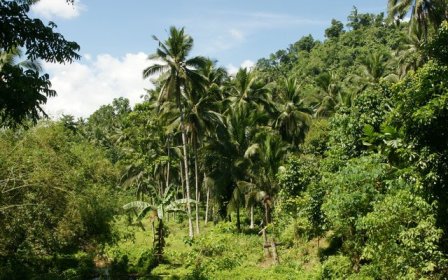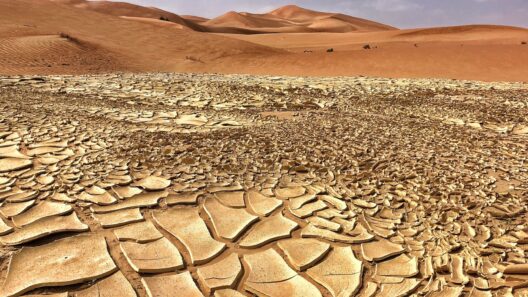Understanding the climate of Bolivia is pivotal in grasping its environmental diversity and the challenges posed by climate change. The nation, encapsulated in the heart of South America, offers a juxtaposition of terrains—from the towering Andes Mountains to the verdant Amazon rainforest. This multifaceted climatic tapestry not only influences the biodiversity but also affects the livelihoods of millions of Bolivians. The distinct climatic characteristics of the mountain highlands and rainforest regions merit an in-depth exploration.
The Andes, comprising the backbone of Bolivia, rise dramatically as one of the highest mountain ranges in the world. Reaching elevations exceeding 6,500 meters (21,300 feet), these highlands exhibit a unique weather pattern that is starkly different from the low-lying areas. The climate here is predominantly characterized by its altitudinal gradient; it is classified as highland or mountain climate. Generally, temperatures decrease as altitude increases. Consequently, at higher elevations, rather than the typical tropical climates found at lower altitudes, one encounters a cooler, more temperate environment.
At the high altitudes in Bolivia, average temperatures can hover between -5°C to 15°C (23°F to 59°F). The variation is marked by factors such as geographical location and topography. For instance, while the northern highlands may experience slightly warmer conditions, southern regions, particularly around Potosí, remain severely frigid throughout much of the year. Notably, during the day, the sun’s rays are fierce, leading to considerable temperature fluctuations between daytime and nighttime. Such diurnal variations are intrinsic to this region’s climate, as they provide both challenges and opportunities for agriculture and farming practices.
Precipitation in the mountain highlands is profoundly influenced by the phenomenon of the altiplano, a high plateau region. The rainy season typically spans from November to March, with peak rainfall occurring between January and February. During this period, moisture-laden winds from the Amazon are forced upward by the Andes, resulting in significant rainfall in the microclimates of valleys and slopes. This hydrological pattern is vital for sustaining the water supplies that feed into rivers and lakes, impacting local flora and fauna as well as agricultural practices.
Interestingly, rainfall in the highlands often results in diverse weather patterns within short distances. For example, while one valley may experience vigorous downpours, adjacent areas might remain relatively dry. This variability creates unique ecosystems, where certain regions may flourish with robust plant life, while others might be starkly arid. Such ecological contrasts underscore the necessity for nuanced understanding and adaptation strategies as climate variability intensifies with global warming.
Transitioning from the mountain highlands, we delve into Bolivia’s expansive rainforest regions, situated predominantly in the northern and northeastern parts of the country. The Bolivian Amazon harbors one of the most biodiverse ecosystems on the planet, boasting an intricate network of flora and fauna that relies heavily on the region’s climatic conditions. The rainforest climate is categorized as tropical, marked by consistently high temperatures and abundant rainfall throughout the year.
Temperatures in the Amazon basin typically oscillate between 20°C to 29°C (68°F to 84°F), fostering an environment where dense vegetation can thrive. Unlike the highlands, the Amazon experiences little to no temperature fluctuation, maintaining a warm and humid atmosphere year-round. This heat, coupled with humidity levels often exceeding 80%, promotes the extensive growth of towering trees and a myriad of understory plants.
Rainfall in the Bolivian rainforest is an astonishing feature of the climate. Average annual precipitation can exceed 3,000 millimeters (118 inches), with the wettest months typically occurring from December to March. During this period, torrential downpours are common, creating a lush, vibrant landscape vital for numerous animal species. The cyclical nature of rain is not merely a weather phenomenon; it plays an integral role in the ecological balance of the rainforest, replenishing waterways and sustaining the intricate web of life within it.
However, climate change poses significant risks to both the mountain highlands and the rainforest regions of Bolivia. In the highlands, rising temperatures may alter traditional agricultural practices, threatening food security for mountain communities. The risk of glacial retreat is particularly alarming, as glaciers serve as crucial water sources for rivers that support both agriculture and human consumption. The gradual ebb of these glaciers symbolizes an urgent warning about the shifting climate, emphasizing the need for adaptive strategies in agriculture.
Conversely, the rainforest’s delicate ecosystem faces threats from both deforestation and climate variability. As temperatures rise and precipitation patterns shift, the biodiversity that defines the Amazon may face unprecedented challenges. A shift in climate can exacerbate the incidence of droughts, disrupt migratory patterns of wildlife, and foster conditions conducive to wildfires—further deteriorating the health of the rainforest.
Despite these challenges, Bolivia’s unique climate provides a promising opportunity for understanding and addressing the global climate crisis. By fostering innovative agricultural practices that are consistent with both highland and rainforest climates, Bolivians can serve as a model for sustainable living. A commitment to preserving biodiversity and safeguarding water sources will be integral as they navigate the complexities brought about by climate change. The world’s gaze should be directed towards Bolivia, where lessons learned from its climatic extremes can illuminate pathways toward resilience and sustainability.
Through examining the diverse climatic landscapes of Bolivia—its majestic highlands and vibrant rainforests—one is compelled to reflect on the interconnectedness of our global ecosystem. To preserve this intricate balance, awareness, and action are imperative. Only by embracing this understanding can we collectively rise to meet the challenges of climate change, ensuring a sustainable future for all.







